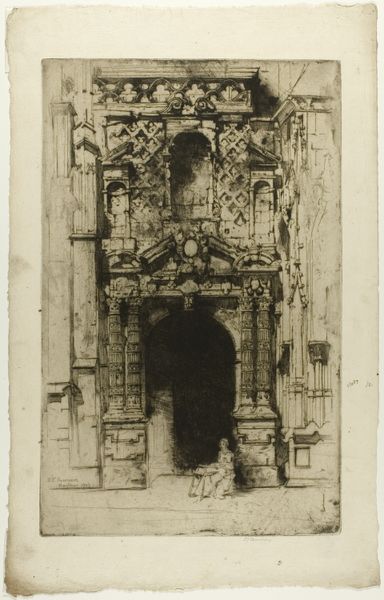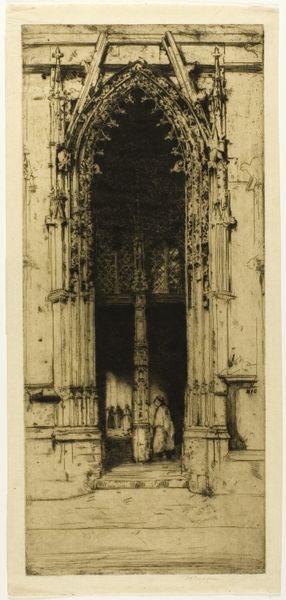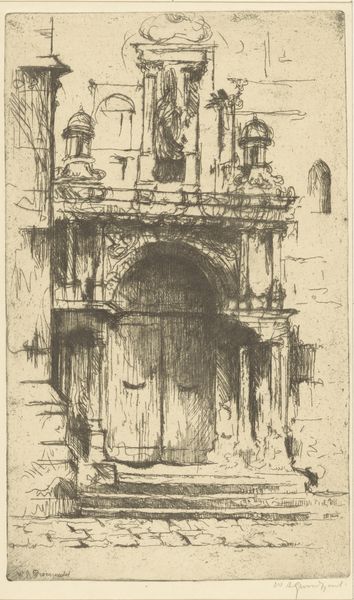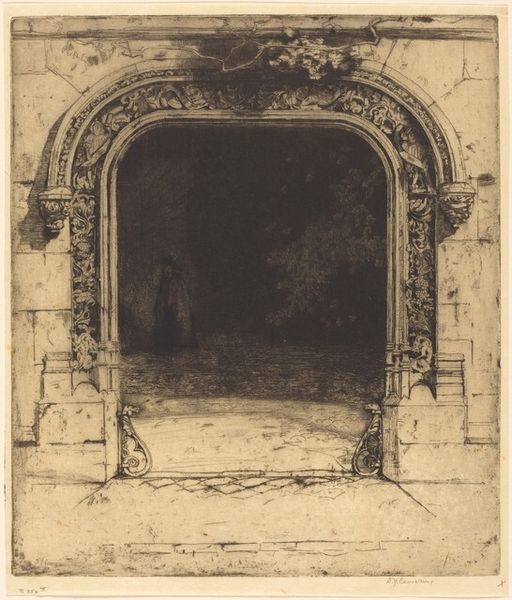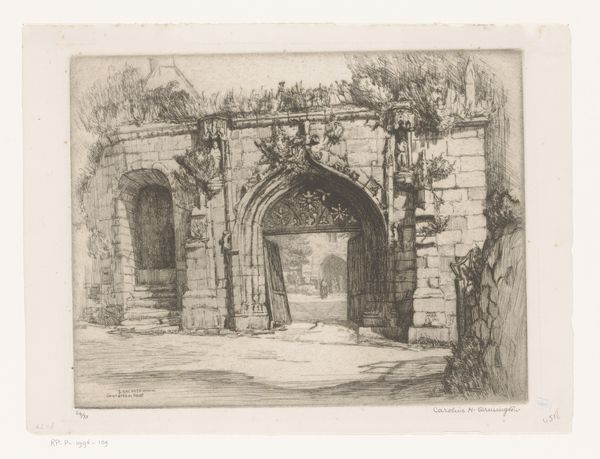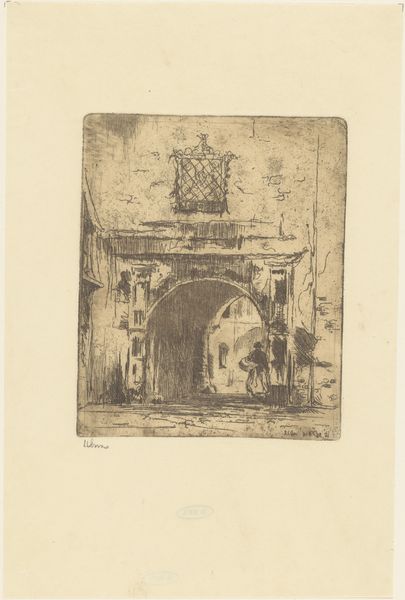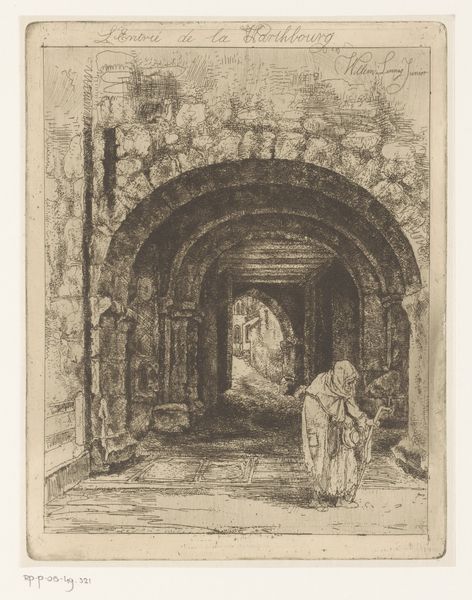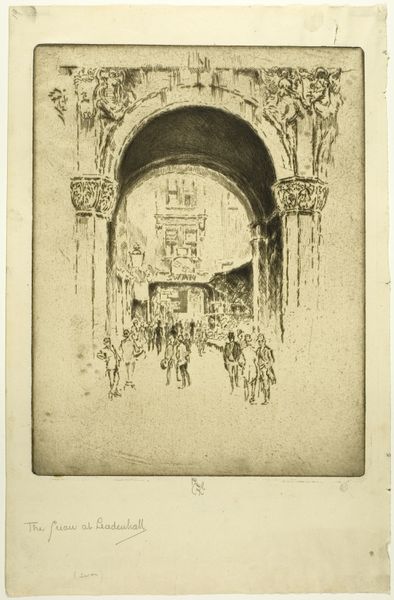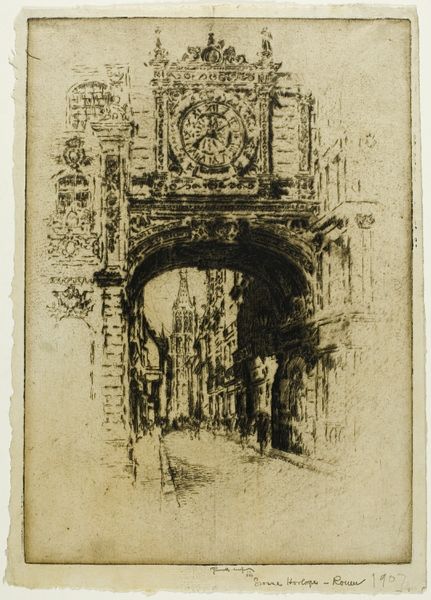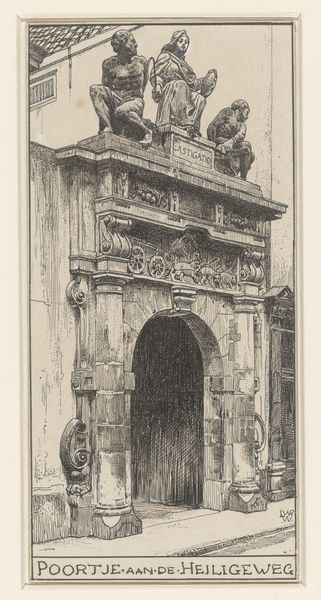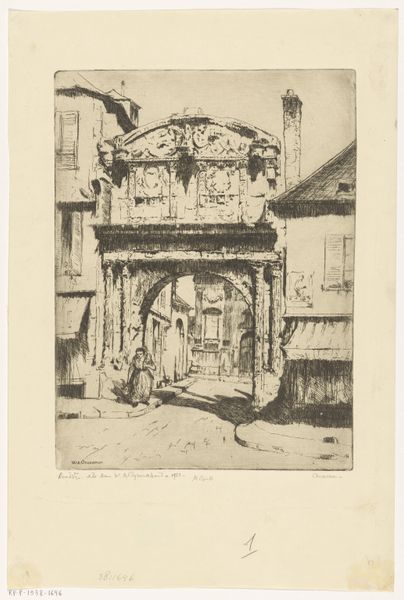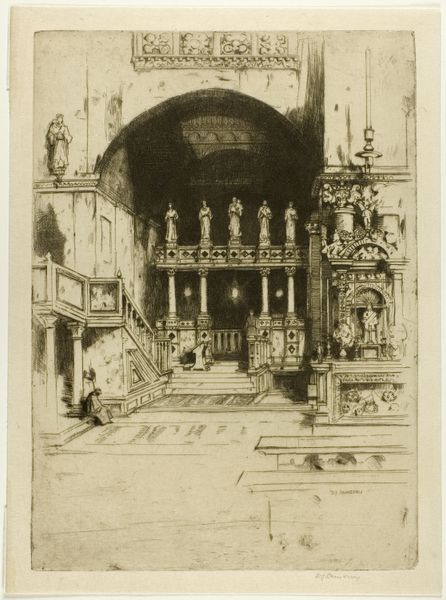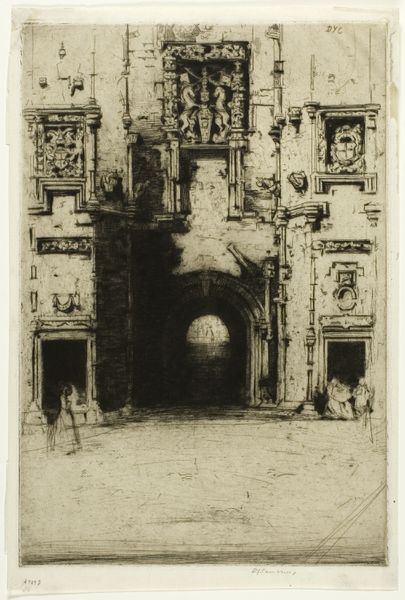
drawing, print, etching, paper
#
drawing
# print
#
etching
#
paper
#
ancient-mediterranean
#
islamic-art
Dimensions: 283 × 187 mm (image/plate); 301 × 202 mm (sheet)
Copyright: Public Domain
Editor: Here we have David Young Cameron’s "Rosslyn," an etching from 1899 currently residing at the Art Institute of Chicago. Looking at the intricate detail achieved through etching on paper gives the whole image such an intense quality. How does its materiality inform your understanding of the artwork? Curator: The materiality is key. Think about etching as an industrial process adapted for art. Acid, metal plates, paper - these are products of specific technologies and economies. It's not just about aesthetics; it's about the labour involved in its making, the socio-economic context which makes this kind of reproductive method desirable. Where did the paper come from? Who produced the acid to etch the plate? What kind of press was used to produce the print, and who was operating it? The image itself is a gothic entrance, but what kind of audience was it made for? Was it an aesthetic experience aimed at mass-production and a different level of art appreciation through accessibility? Editor: That makes me think about how the choice of etching makes the architecture accessible to people who wouldn't see it otherwise. How would its reception in 1899 be different from how we view it today? Curator: Absolutely. The choice of process speaks to Cameron's understanding of audience. The industrial aspect means there could have been wider distribution; potentially it lowers the stakes around encountering ‘high’ architecture and the gothic. What does it mean to experience an image through this mode of making? What new value, or values, are imbued in this print because of its reproductive qualities? What work is required by the viewer? Editor: Considering the print's manufacturing adds layers to my initial appreciation. Now, it highlights an intention that exceeds capturing its physical manifestation. Curator: Precisely. By considering its material origins, we can understand the work as a cultural product, not merely an artistic expression.
Comments
No comments
Be the first to comment and join the conversation on the ultimate creative platform.
